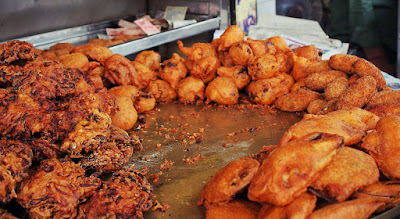[From 1918]
Kolkata is famous for many things
which have been originated here. If we talk about food Rosogolla and Misti Doi
are the patent food items of Kolkata. It would be very unfair if we miss out
one delicious snack item which is also very significant item of the city- Chop.
Chop is a well demanded street food in Kolkata. Among many famous shops the 100
year Laxmi Narayan Shaw is famous for its heritage.
The shop was started by Late Khedu
Shaw in the year 1918. At that time a budding youngster, a student of Scottish
Church College used to visit their shop frequently. His sparkling presence had
some factor which made the owner notice him. This young man was none but Netaji
Subhash Chandra Bose. Later the shop was also called by Netajir Chop er
dokan.
Whenever there a meeting was held
mainly for the Swadeshi Movement snacks was ordered from Laxmi Narayan Shaw.
From the primitive days this shop offers telebhaja free of cost on the occasion
of Netaji’s birthday every year.
“We maintain the quality since we
started our business, this is the reason for which it is running successfully
even after completing a century”- said Mr. Mohan Gupta the third generation
owner of the shop. It is named by his father Laxmi Narayan Shaw. The shop
infixed their stepping stone in the market with a few items like Aloo Chop,
Piyaji, Fuluri, Beguni etc.
With the upswing in profit day by
day their business and fame both flourished. Paneer Chop, Soyabean Chop,
Chowmein Chop, Kashmiri Chop, Aam Chop and cutlets were added to the menu
later. Like other items these also grabed the attraction and appetite of the
customers.
Birendra Krishna Bhadra, Uttam
Kumar, Anjan Dutta and many other renowned celebrities used to come to satisfy
their taste buds with some mouth watering chops and cutlets. The shop is
presently maintained by . According to him, “Though we are not sure about who
will take the responsibility of our heritage but I wish it to be live for
another a hundred years.”









Comments
Post a Comment